If you’re designing aluminum parts, it’s important to consider the manufacturing process. Among all the processes of forming aluminum, aluminum die casting is the go-to solution.
Aluminum is a lightweight alloy with high dimensional stability. So, aluminum die casting is a popular manufacturing process to create complex shapes and designs with a thin wall section. Therefore, they are a popular metal in various industries.
This article will help you understand the basics of the die-cast aluminum process. Let’s take a deeper look into the process.
What’s the Aluminum Die Casting Process?
Die casting aluminum is a manufacturing method to create metal parts. An aluminum bar should be heated and melted entirely at a high temperature and then forced into the pre-shaped mold cavity to create desired metal parts.
The aluminum die casting process uses the casting machine’s cold chamber. The reason for melting aluminum in a cold chamber machine is that the high molten aluminum temperature would damage the machine if the injection mechanism is submerged like the hot chamber process.
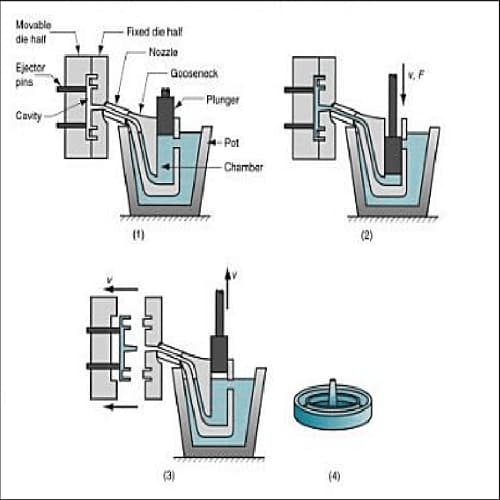
In the cold chamber machine, the melting pot is separated and the molten aluminum alloys then are ladled from the pot into the die under high pressure. After injecting the molten aluminum, it takes a while to solidify. Then, you need to separate the two halves parts of the mold to reveal the aluminum cast part.
The end product comes out with a smooth surface. Most of the time, the finished products don’t need minimal machining and move into the delivery stage quickly. Moreover, the die-cast mold is recycled to manufacture the same parts before it deteriorates. Therefore, aluminum die casting is an ideal manufacturing process for large-scale production. And that is why manufacturers prefer to die casting this and it is popular in various industries.
Aluminum Die-Casting Advantages
Aluminum casting has extensive surface finish options. The dimensional stability is another big advantage of the aluminum die casting process. Moreover, they are versatile, and you can use them for nearly any industry.
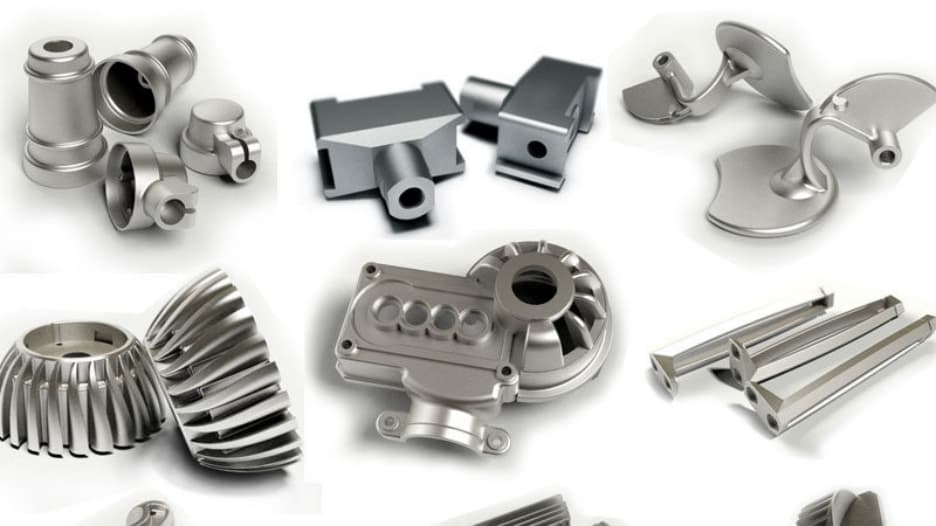
Here we have listed some of the benefits of aluminum casting:
- Finished products with excellent surface finish
- Good Tensile strength
- Low-cost raw materials
- Reduction of porosity and impurities
- The firm molecular structure ensures dimensional tolerance without microcracks
- Thickness accuracy (less than 1.5 thickness is achievable)
- Airtightness and pressure
- Longevity
- Many alloys to choose from with various chemical and mechanical properties
- Can produce parts with very complex designs
Common Die Cast Aluminum Alloys
There are a few aluminum alloys commonly used in die casting. Some of them are:
- A380
- A390
- A360
- A413
- ADC-12
- ADC-1
When preparing for aluminum alloy die casting, picking the right alloy is your first important task. Let us give you some ideas on different common die-cast aluminum alloy properties to assist you.
For example, the A390 alloy has a high hardness and excellent wear resistance, but the flexibility is lower than all other alloys. Consequently, they are appropriate for applications like automotive engine blocks.
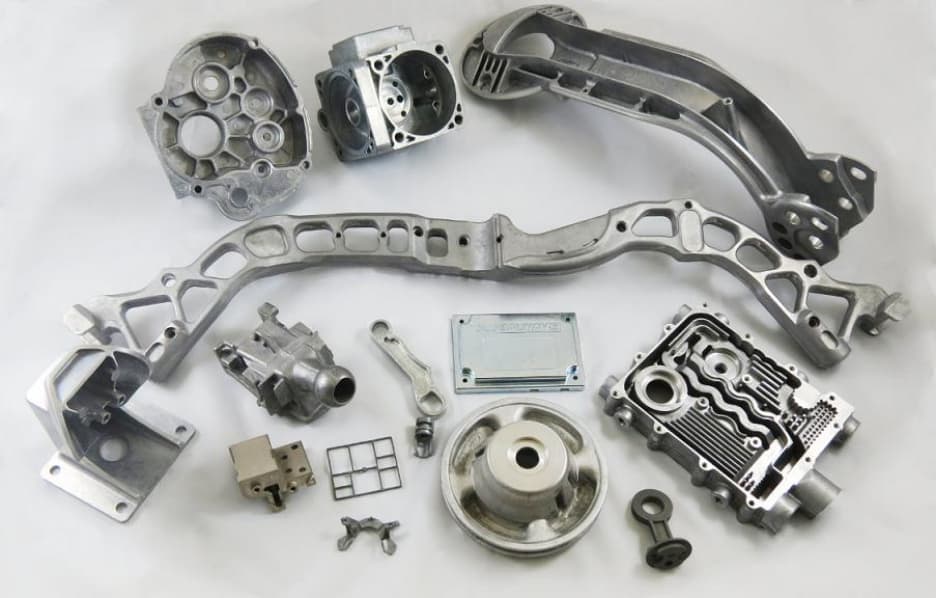
On the other hand, A360 comes with outstanding pressure tightness and corrosion-resistant properties. Besides, they offer excellent fluidity when molten. This alloy is ideal for 5G communication boxes, automobile controller shells, automobile oil pans, etc.
A380 alloy offers both excellent product and casting properties. Therefore, they are the manufacturer’s choice for a wide range of applications. For example, power tools, household furniture, chassis for electronic equipment, gearbox cases, engine brackets, and many other applications use A380 alloy.
Aluminum Die Casting Alloy Characteristics
Aluminum alloy comes with various advanced chemical and mechanical properties. They are highly corrosion-resistant and have high heat dissipation properties. Moreover, the strength-to-weight ratio is also a significant advantage.
These properties help mechanical engineers to design aluminum die casting parts with great flexibility. Here are some of the properties:
- Lightweight
- Corrosion resistance
- Outstanding strength to weight ratio
- High operating temperatures
- Good stiffness
- Fine finishing characteristics
- RFI and EMI shielding
- Superb thermal conductivity
- High electrical conductivity
- Full recyclability
Surface Finishing Options for Die-Cast Aluminum
Parts made from die-casting aluminum processes need minimal machining. But nothing is perfect. So, sometimes you need to perform surface finish operations for aesthetics and other functional purposes.
Here are some of the most popular surface finish options for aluminum casting parts.
Anodizing
Anodizing die-cast aluminum is an affordable option to make parts corrosion-resistant and durable. It comes with a non-conductive protective layer on the parts.
Aluminum is a highly conductive material, but the oxide layer has ceramic-like chemical and physical properties that is electric insulation, Therefore, the anodized die-cast aluminum becomes non-conductive.
However, the anodized aluminum shows limited electric conductivity through contact. It’s because of the thinness of the surrounding oxide layer. But the conductivity is very low compared to untreated aluminum. So if your application requires electric conductivity through aluminum you should pick another surface finish option.
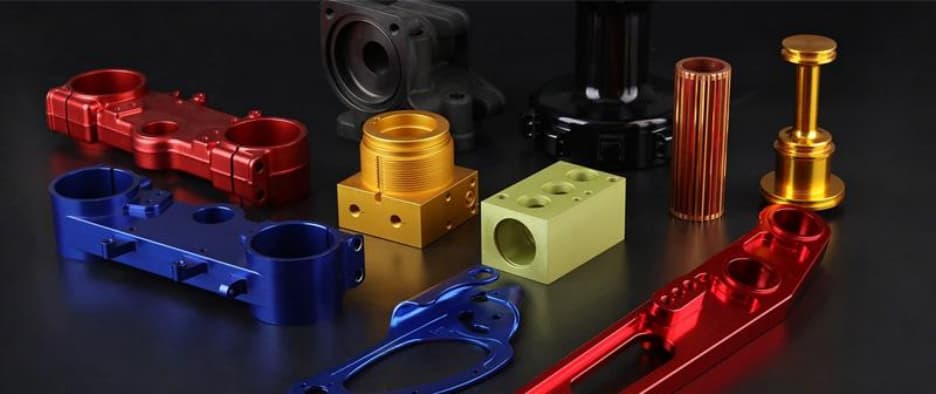
Powder Coat
Powder coat is one of the most popular surface finish methods for aluminum die casting parts. It happens at a higher temperature and is comparatively tough to do. But this method makes the parts ding and scratch-resistant. In addition, you will get a wide variety of colors, textures, and gloss levels.
Chem Film
This is another popular surface finish option for aluminum die casting materials. You can apply this by many means such as spray, dipped process, brush, etc. The only difference is that it is electrically conducted.
Read on more details about surface finish options for metals.
Applications of Aluminum Casting Parts
Aluminum alloy has some excellent mechanical advantages. Therefore, you will see them in many applications. For example, they are an integral part of the automotive and construction industries.
According to a report, the aluminum casting market size was 50.5 billion US dollars in 2019 and expected compound annual growth (CAGR) of 6.4% from 2000 to 2027. More industries will join the community, and new applications will be developed.
Here are some of the top applications of aluminum alloy die casting.
Construction
You will see aluminum in roof superstructures, window frames, etc. These days large structures such as bridges and commercial buildings also use die-cast aluminum parts in the construction process.
Automotive
Aluminum alloys are lightweight, which is also an essential feature for modern-day vehicles. Therefore, you would see these alloys in a wide range of applications in the automotive industry. From engine to body parts, they are everywhere.
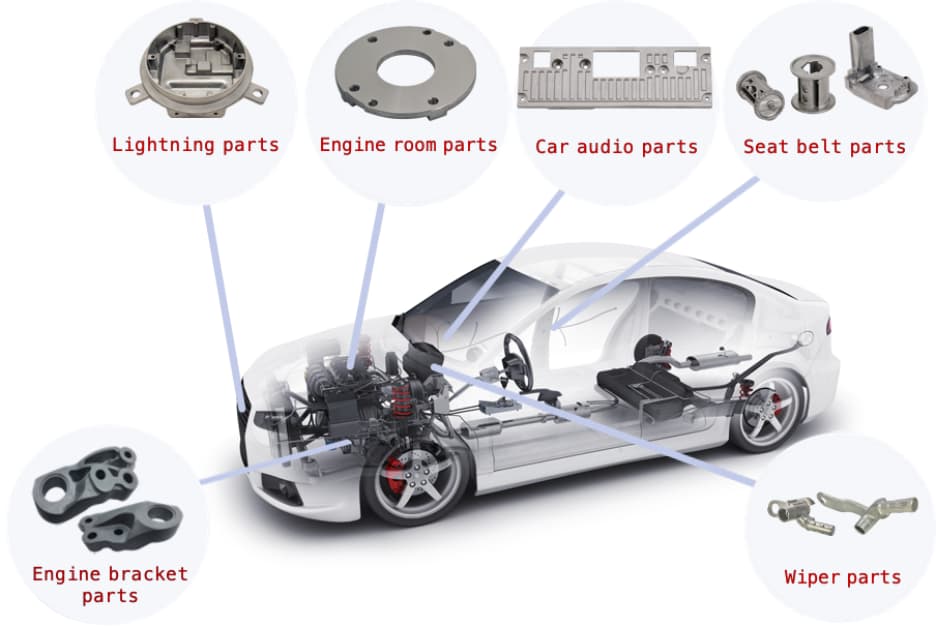
Electronics Industry
Over the past two decades, no other industry has risen more than the electronic industry. The innovation of consumer products in these industries has been outstanding. And aluminum has been playing a major role in producing those consumer products.
From smartphones to 5G network housing, die-cast aluminum alloy plays a significant role in this development.
Furniture
Aluminum has a high strength-to-weight ratio and is corrosion-resistant. In addition, they are not that expensive. As a result, the furniture industry uses an aluminum alloy to manufacture various home and office furniture.
For example, you can see more and more chairs made with die-cast aluminum. Besides, many important furniture parts are made of aluminum parts such as door locks, hinges, knobs, and other aluminum fittings.
Aerospace Industry
Like the automotive industry, the aerospace industry also needs an alloy that is lightweight and impact resistant. Also, the aerospace industry requires complex tools and high tensile structural components. Consequently, aluminum die casting materials are used for various parts of an airplane.
Some aerospace parts are made of die-cast aluminum, like airplane engine piston heads, cargo loading housings, fuel system parts, airplane distributor cap housings, as well as lighting fixture parts and electronic enclosures detention ring parts.
Aluminum Die Casting Parts Design – 3 Factors to Consider
Manufacturers need to take some measures through the aluminum die casting process.
Mold Design
The first big thing is the mold design. The design needs to be efficient so you can inject melted aluminum and bring out built parts effortlessly. Every mold has a parting line (the line that separates two halves), and the designer should consider the line before finalizing the design.
The Location of Injection Point
The next big consideration is the injection point’s location. You can add more than one injection point. This can be done if there is any chance of solidifying the melted aluminum before reaching every crevice in the die. Moreover, it helps the cavities in the design.
Wall Thickness
Parts’ wall thickness is another consideration you should make. With automation technology and sophisticated machines, there is no minimum thickness level. But for better results, it would be best to opt for a consistent thickness for better results.
Aluminum Die Casting Quotes: Custom Aluminum Die Casting Prototypes and Parts
Aluminum Casting Cost
The aluminum alloy die casting process is relatively an inexpensive manufacturing process. The cost depends on various factors. The first one is initial tooling costs. The tooling cost for this process ranges from USD 7000 to USD 75,000 so it would increase the total price of the die casting process. But as die casting is a repetitive process, it becomes more cost-effective when you go for large volume production.
Second, it’s hard to determine the exact die casting cost without knowing the product specifications. It depends on die size, whether the created profile is hollow or solid, and the cross-section complexity.
Third, the cost will change according to the type of the machine and workers. The solidify process will take longer for massive features and that will also affect the costs. Moreover, complex moving parts affect the opening and closing events of the machine which also increases the costs.
RapidDirect – Your Cost-Effective Aluminum Die-casting Service Provider
RapidDirect offers precise custom aluminum die casting services with a fast turnaround time. You can manufacture various aluminum parts with a wide range of dimensions – from a few grams to as much as you like.
We have industry-experienced workers and engineering, strategic and creative experts to complete your project just as you desire. From prototyping to large-scale production, we deliver you the best affordable service.
Our workshops are equipped with automated machines and robots built with futuristic technology.
We can achieve a tolerance down to ± 0.004” (0.1 mm) for your die-cast aluminum parts. We are ISO 9001:2015 certified and build your die cast parts following the industrial standards.
Here is how you can be benefitted from Rapid Direct.
- Up to 30% price reduction
- Manufacture parts according to customer needs.
- Our professional engineer experts always give the optimal manufacturing feedback according to your design.
- Strong capabilities to accelerate the cycle from design to parts
- You can upload design files to our platform that provides a rapid quotation and free DFM analysis.
- High inspection standards to ensure high-quality parts.
- Working experience with Tesla, Toyota, NASA, Emerson, Emirates, and many other large brands and organizations globally.
Conclusion
Die-casting can be an expensive method if you are not working with a good number of parts. But if you are dealing with a good quantity, die-casting is the most cost-effective process. Manufacturers choose aluminum over other metals because of its unique characteristics. Besides, fewer material costs also help manufacturers to increase their revenue margins.
We hope this article was helpful for you. Rapid direct’s professional die casting service ensures you will get the exact part from your design. And we also offer a price reduction to satisfy our global clients. If you have any queries, send us a message. And don’t forget to ask for a quote if you have any project in mind.
Frequently Asked Questions
The most significant difference between die casting and sand casting is the mold-making material. Aluminum casting uses a mold made of aluminum alloy. On the other hand, sand casting uses a mold made of sand.
Sand casting is capable of working with more complex designs. On the other hand, die casting offers more dimensional accuracy and speed.
Another vital difference is, sand casting produces thicker walls whereas die casting can produce thinner walls. Therefore, sand casting is not ideal for small parts.
Production speed is another vital difference between these two techniques. Die casting tooling is a complex task and needs a considerable amount of time. On the other hand, sand casting tooling is a simple process and needs less time than die casting.
Die casting is ideal for large-scale production like if you need thousands of parts. But sand casting is ideal for small-scale production like 100-150 units.
We have a detailed guide on Die casting Vs Sand Casting.
Aluminum casting is one of the most cost-effective metal die-casting processes. Though the tooling of die casting needs more time, you can create thousands of units with one mold. The more you produce, the less becomes your unit price. Aluminum is much cheaper than stainless steel and slightly more expensive than carbon steel.
Die casting is an automated casting process. It takes a while to create the mold. But the mold can solidify aluminum alloy quickly. And as it is an automated process, the machine can manufacture many units without taking any break. Therefore, die casting is a fast process especially when you are manufacturing a huge number of parts.


